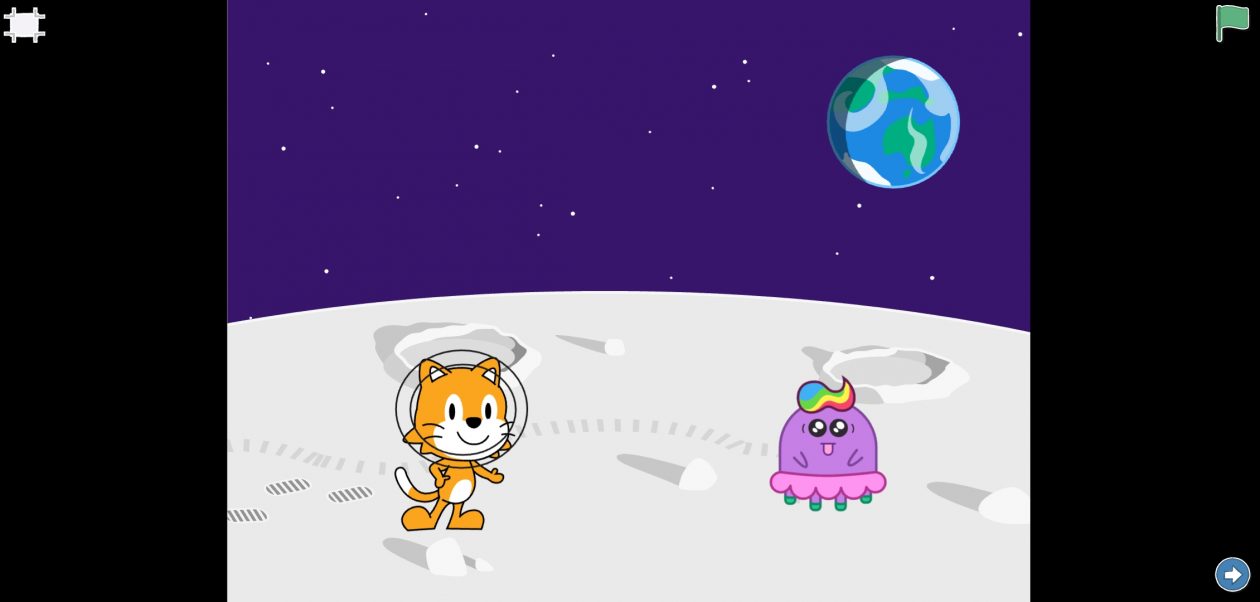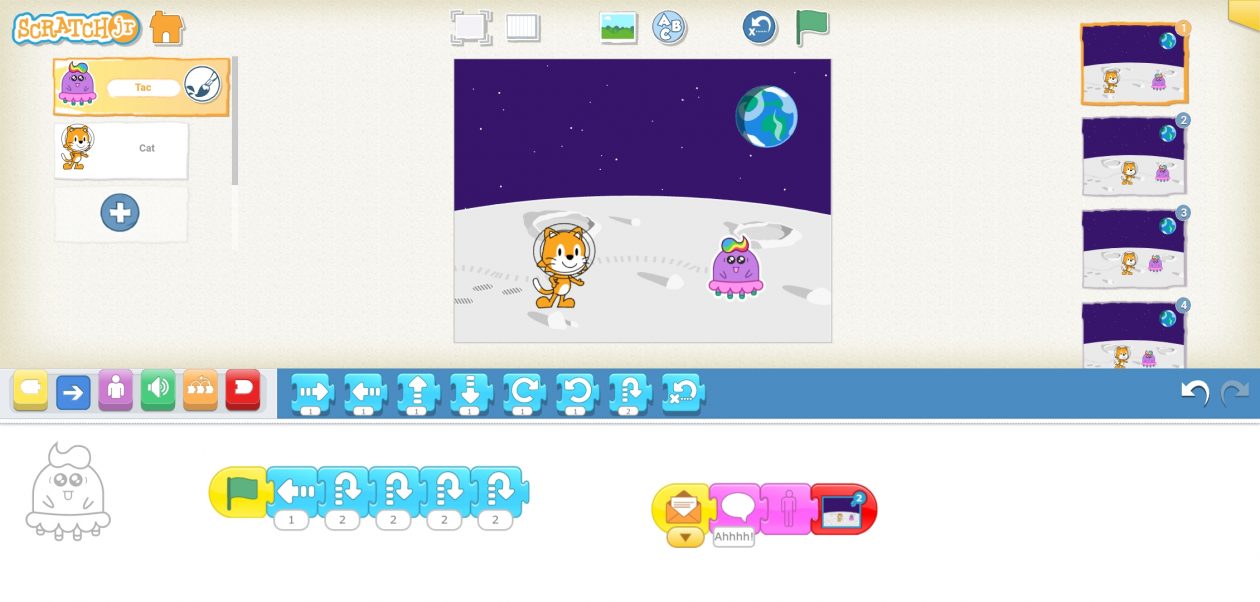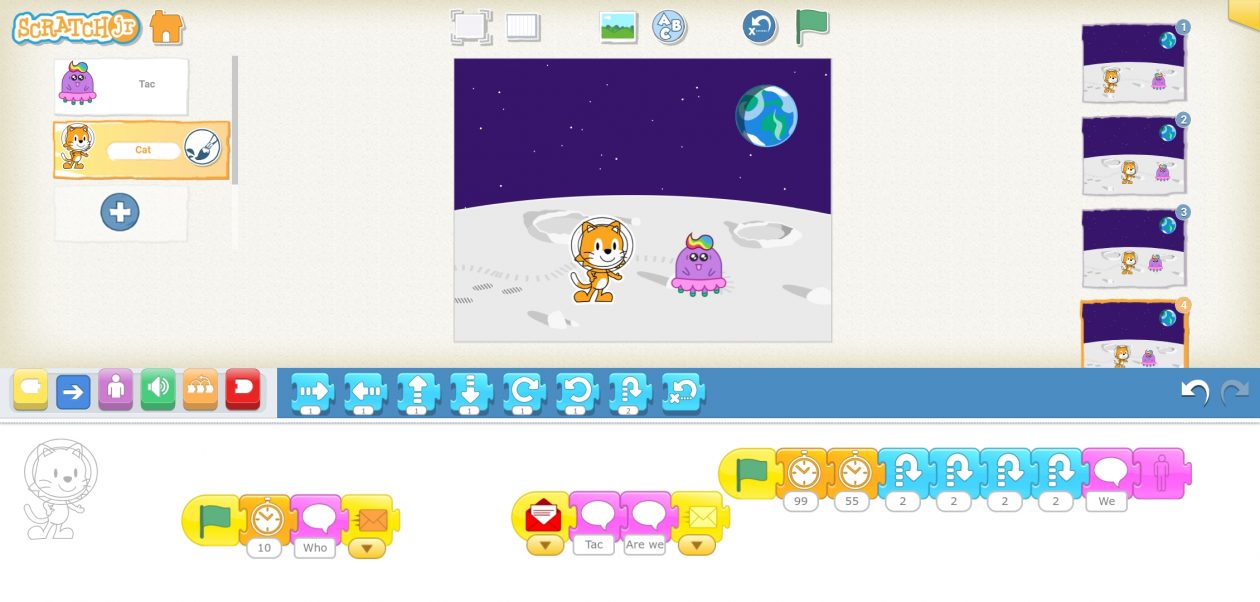In today’s fast-paced world we must prepare our next generation of learners not only how to use the technology we have today but be ready to create technology for the future. There has been a wide debate about how involved our education system should be in implementing this and one area of computer has been a focus of this debate – coding. Should coding be mandatory learning? Personally I believe so and the English government agrees that at all stages some level of coding or programming must be taught in the classroom (Naughton, 2012). This should elevate our learners to come up with things that our generation never thought possible, but only if we as practitioners are equipped with the knowledge and understanding to deliver these lessons (Education Scotland, 2016).
In this session we were using the coding tool “ScratchJr” to create a story or learning experience that could be used in a literacy lesson. This could’ve been aimed at any stage but I created mine to focus on early years learning as so far I have not focused on this stage of learning. I created a story that introduces children to Matt the cat and Tac the alien and how they they become good friends. It explores different emotions: happy, sad and scared. Also, uses a lot of sounds that are introduced in early years learning. If I used this story in a classroom it would fit the following experiences and outcomes from Curriculum for Excellence (CfE):
LIT 0-01a/LIT 0-11a/LIT 0-20a – I enjoy exploring and playing with patterns and sounds of language and can use what I learn.
I was one of the privileged that had a device compatible with the software meaning I am able to keep and share this experience outside of this lesson – unlike with last weeks session where although I do have the final product stored I have no means of using it.



I wholeheartedly can get behind the use of “ScratchJr” as a way for children to engage with coding. The interface is very aesthetically pleasing and invites the user to try different blocks to see what can be done: there are blocks that move characters, make them speak, make them repeat code, and the possible combinations are endless. This trial and error approach helped me understand the idea of identifying and fixing a basic algorithm – something that today a child by the end of key stage 2 in England would be expected to know (Curtis, 2013). Having looked around the room and no two people doing anything remotely similar bodes well for using it in a classroom – a practitioner can create an endless variety of experiences and a classroom of pupils could be tasked to created something and potentially no-one would have the exact same thing allowing pupils to have a sense of pride and ownership over work like this. By using coding we move away from a traditional classroom when every child must produce the same outcome in order to succeed. Coding – like life – has endless possibilities and should be experienced to its fullest. This can only be achieved if we make coding a normal part of the school day.

References
Curtis, S. (2013) Teaching our children to code: a quiet revolution. The Telegraph. [Online] 3 February, non-paginated. Available: http://moodle1819.uws.ac.uk/pluginfile.php/39846/mod_resource/content/1/Teaching%20our%20children%20to%20code%20a%20quiet%20revolution%20-%20Telegraph.pdf [Accessed 3 February 2019].
Education Scotland. (2012) Language Learning In Scotland: A 1+2 Approach. [Online] https://www.gov.scot/publications/language-learning-scotland-12-approach/ [Accessed: 15 January 2019].
Naughton, J. (2012) Why all our kids should be taught how to code. The Guardian. [Online] 3 February, non-paginated. Available: http://moodle1819.uws.ac.uk/pluginfile.php/39847/mod_resource/content/2/Why%20all%20our%20kids%20should%20be%20taught%20how%20to%20code%20%20Education%20%20The%20Observer.pdf [Accessed 3 February 2019].

